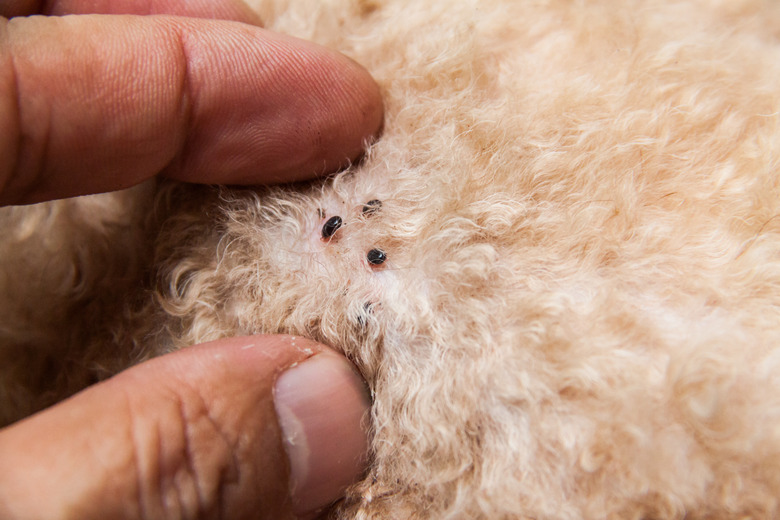What Types Of Fleas Live In Florida?
Fleas are hard-shelled parasites that live off the blood of hosts such as dogs, cats and other warm-blooded animals. According to The Florida Entomologist, 19 of the 2,200 species of fleas are presently known to be in Florida. Most are cat fleas (Ctenocephalides felis), but human fleas (Pulex irritans), sticktight fleas (Echidnophaga gallinacea) and a few dog fleas (Ctenocephalides canis) also live in Florida.
Cat Flea
Cat Flea
The most common type of flea in Florida is the cat flea. Found all over the world, the cat flea is the one typically found on dogs and cats in the United States. The wingless insect is reddish brown to black and compressed from side to side to allow them to travel through thick fur. Their strong legs are built to jump and run through the hair, fur or feathers of their hosts. According to the University of Florida IFAS Extension, cat fleas live up to 25 days on hosts as adults, feeding on blood that helps them produce eggs. They can cause allergic dermatitis and tapeworms. Though it rarely happens, they can also transmit murine typhus or plague to people.
Dog Flea
Dog Flea
The dog flea is more common in Europe than the United States, but a few have been found in Florida. They are so similar to cat fleas that differences can only be seen under a microscope. Found mostly on dogs, wolves and foxes in Europe, Africa and Asia, they are capable of producing the same diseases as cat fleas.
Human Flea
Human Flea
The human flea was more common in the 1500s when conditions were less sanitary, but they are still found on short-haired domestic animals such as pigs and dogs. They are the type of flea that feeds on human hosts and can carry illnesses including dermatitis, allergic reactions, tapeworms and plague. While cat and dog fleas can also feed on humans, they aren't built to live on creatures with as little hair as humans, but the human flea is able to hang onto humans well enough to live on them.
Sticktight Flea
Sticktight Flea
Sticktight fleas are known to burrow their heads underneath the skin of animals such as birds, dogs, cats, pigs, horses and humans, making them difficult to remove. Often found around the eyes, comb and waffles of chickens and on bare spots of other birds, sticktight fleas can spread to dogs that are around poultry, sticking in their ears and between the toes. Though not known to carry disease, the dark brown flea can cause infections that lead to swollen eyes, while young animals can develop anemia when sticktight fleas feed on them.
References
- "Vet Parasitol"; Flea species from dogs and cats in north-central Florida; D.W. Harman, R.E. Halliwell and E.C. Greiner
- University of Florida IFAS Extension; Cat flea,Ctenocephalides felis felis; D. C. Zentko and D. L. Richman
- University of Florida IFAS Extension; Sticktight Flea, Echidnophaga gallinacea; P. G. Koehler, R. M. Pereira and P. E. Kaufman
Cite This Article
MLA
Whitehead, Cathryn. "What Types Of Fleas Live In Florida?" sciencing.com, https://www.sciencing.com/types-fleas-live-florida-8686202/. 22 November 2019.
APA
Whitehead, Cathryn. (2019, November 22). What Types Of Fleas Live In Florida?. sciencing.com. Retrieved from https://www.sciencing.com/types-fleas-live-florida-8686202/
Chicago
Whitehead, Cathryn. What Types Of Fleas Live In Florida? last modified March 24, 2022. https://www.sciencing.com/types-fleas-live-florida-8686202/
